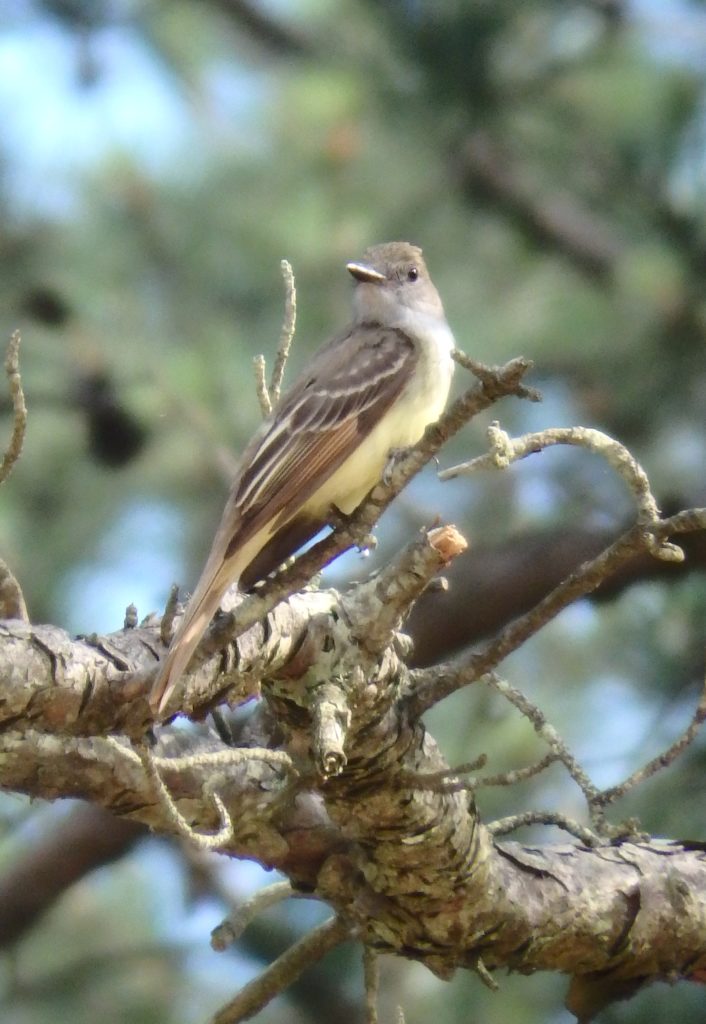
PINELANDS NATIONAL RESERVE, New Jersey – What is the first thing that comes to mind when you think about New Jersey? Probably not forests or wildfire, more likely it’s an image of dense cities, or industrial manufacturing and pollution.
Our preconceived ideas need to be challenged on a regular basis if we want to be knowledgeable citizens. I had my biases rearranged after I visited New Jersey for my younger daughter’s graduation. I flew in an out of Newark, an accurate basis for the stereotype, but I was to learn how limiting that stereotype is.
After the graduation festivities, we met up with Bob Williams, a forester and owner of Pine Creek Forestry, who gave us a day of his time touring the 1.1 million acre Pinelands National Reserve, which is also designated a biosphere reserve.
The reserve has a dotting of rural homes, communities and businesses, along with cranberry bogs, blueberry farms and miles and miles of primarily pine forests, with sprinklings of hardwoods and Atlantic white cedar forests. It was not my stereotypical picture of New Jersey.
This was only the first of several revelations that day. Having spent most of my life in the forests of the western U.S., this day was a delightful exploration of some significant similarities and stark contrasts.
Williams started by saying, “The most significant wildfire damages could likely be here in the pinelands, with many thousands of homes and potentially lives lost, and with the smoke filling New York City.”
This was a topic thoroughly explored by Rolling Stone last year. He explained that over the past 40 to 50 years, the lack of management in much of the forest has developed dense pine stands with understory shrubs that can be explosive in a wildfire situation.

The story of dense flammable forests was familiar to my Western ear.
He took us to a number of different forests that he manages for clients that have been thinned and then burned in the dormant (February/March) time of the year when the pines are very resistant to the effects of fire.
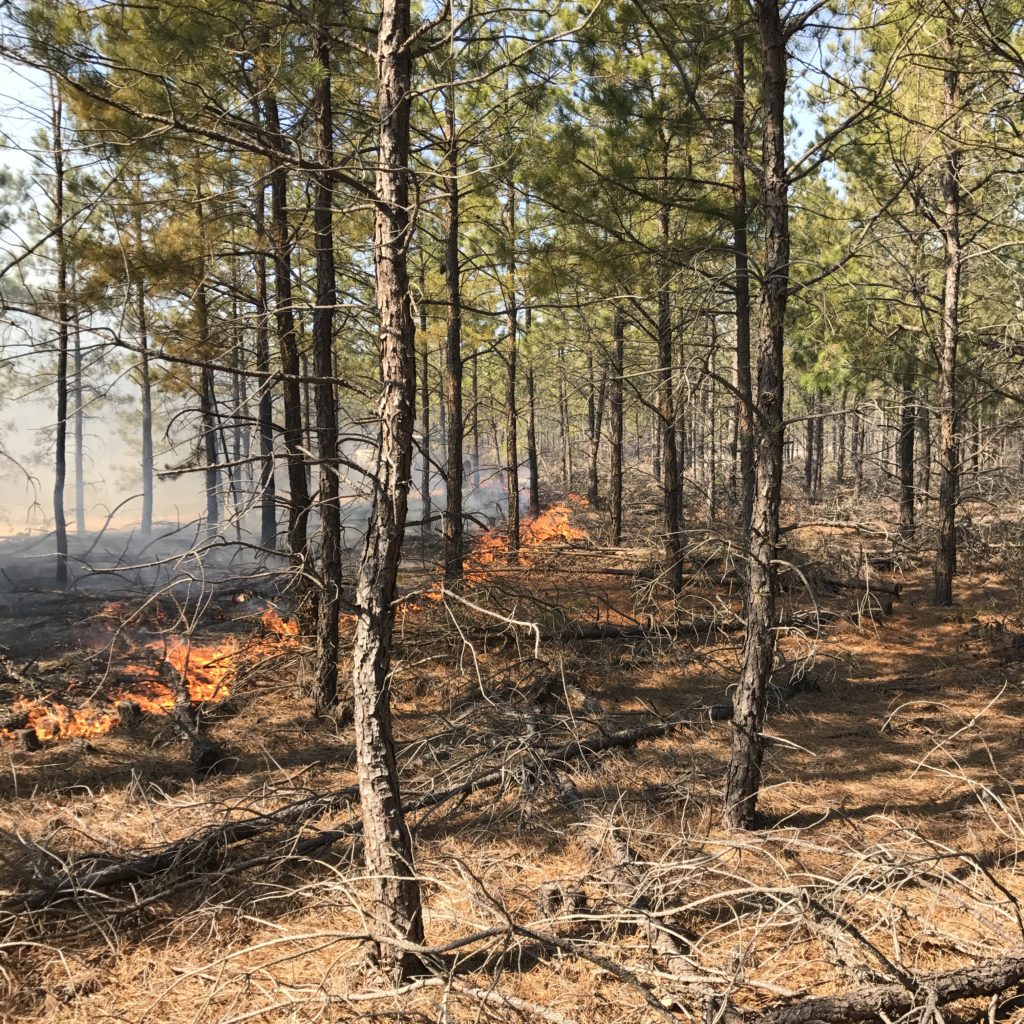
A number of the clients have cranberry bogs and water quality is vital to their business, so the management of the forests surrounding them is critical to maintaining that quality.
I asked about forest conditions pre-European settlement and Williams said the historic descriptions indicate the forests were open and that settlers could drive a horse and wagon through the trees. Fire was used by the Indians that lived here, another similarity to the West.
Williams has been managing forests in the area for several decades and he shared how his management has evolved over time as he tries to have it reflect ecological processes and the values important to his clients.
The combination of harvesting and regular burning helps reduce the potential intensity and effects of a wildfire on the owner’s land, but it also greatly benefits the local fire departments as they deal with wildfires that start in the area, although only a tiny fraction of the lands are being treated this way.
Williams and the landowners struggle with the fact that almost all of the local wood processing plants are gone so they have to ship the trees they harvest much farther for processing, making the treatments less economical, another commonality with much of the interior west.
An intriguing twist to the day was when Williams talked about the enhanced biodiversity as a result of the treatments and the monitoring work that New Jersey Audubon has done to verify the results.
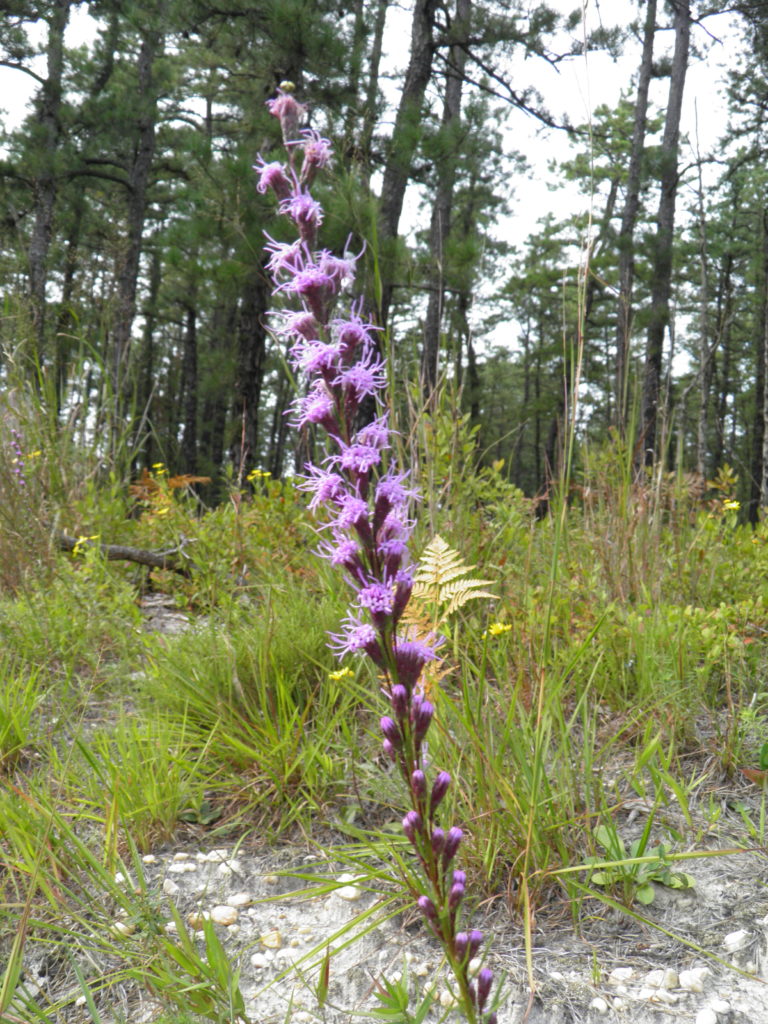
Twelve to fifteen years ago, Williams and one of his clients were approached by New Jersey Audubon to put in some monitoring plots. Williams was skeptical at first, as New Jersey Audubon and most other environmental/conservation organizations had long fought to stop treatments his clients had been implementing.
Confident in the benefits, they agreed to the monitoring with a promise they would have access to all the information and that it be released.
I approached John Parke, stewardship project director of New Jersey Audubon to learn more about their work, and Parke shared several documents and photos from their work and encouraged me to talk with Don Donnelly director of forestry programs with New Jersey Audubon.
They shared that the New Jersey Audubon used to be opposed to forest management, but that changed as they started seeing greater abundance of rare and threatened species in treated areas.
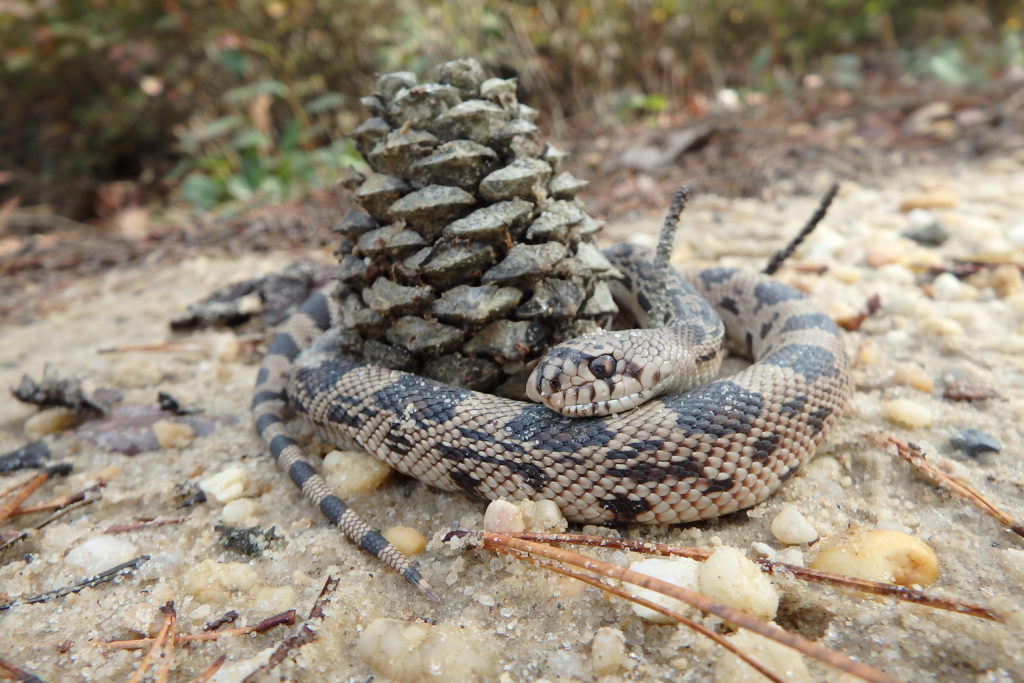
As they shared the observations, Donnelly indicated, “Skeptics said prove it.” This led to monitoring by Audubon and state biologists and herpetologists (reptile and amphibian specialists) to quantify the results. It also led to the development of trust and a productive working relationship between Williams and New Jersey Audubon.
This collaborative behavior from former antagonists is also seen out West, but the distrust is still common as well.
The study shows a greater number of corn snakes, timber rattlers and the northern pine snakes, all listed as either threatened or endangered. They have also seen large increases in many ground nesting birds, like nighthawks. Clearly the snakes have benefited from those bird increases. For the last three years, New Jersey Audubon has released northern bobwhites in these managed forests in an effort to re-establish this species where it used to occur but was locally extirpated. After three years, they are encouraged as they see survivors and offspring of previous releases mating with new releases.
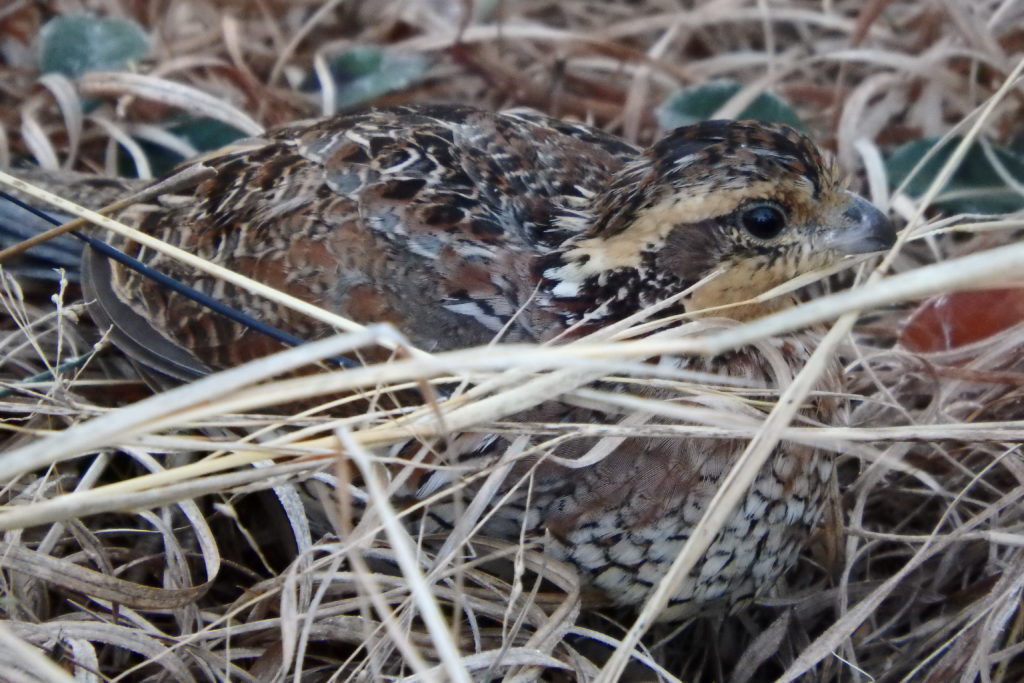
New Jersey Audubon has seen such benefits from forest management in the Pinelands Reserve and in hardwood forests in northern New Jersey, that seven years ago it hired Donnelly to work with forest landowners and the state to expand the management of forests to improve habitats.
The Auduboners challenged their past thinking and expanded their perspective. John Cecil, stewardship director for New Jersey Audubon, indicated some other environmental groups and landowners still actively resist forest management, as they are stuck in their past preconceptions, but they are trying to change that with the scientific evidence, field tours of demonstration forest treatments, and time spent by Williams, Donnelly, John Cecil and others helps open people’s minds to a new way of thinking.
Just so, my preconceived notions of New Jersey have been permanently altered.

This story is really good. Our urban public lives with misconceptions about how disturbance harms forests. Conifer forests, where nearly all our building materials and paper come from, depend on disturbance for self-propagation or planting. Disturbance is part of their ecological need. But when we disturb such forests for timber harvest, we must re-forest, usually by harvesting by clearcutting, and planting seedlings immediately. Urbanites need to know that wildlife of all kinds can exist only if there is a full suite of habitats. Foresters provide this by harvesting trees, sometimes by thinning, eventually by clearcutting and planting. In Oregon, where I have spent the last 60 years conducting research on forest disturbances, these processes are critical for many wildlife species ranging from songbirds to elk. I urge city folk to visit managed forests and read about them. Rest assured that foresters are doing what they can to maintain these fine resources indefinitely while they serve our citizens so well.
Dave:
I appreciate your recent articles in Treesource about fire on the landscape. For your information, the SAF has invited me to write an essay for their upcoming book addressing the management of the National Forests. My essay will be about fire as a forest restoration tool. Tom Harbour is co-author. Our final draft will be submitted to SAF soon, for their review process. Your recent articles are very well done and extremely relevant. My compliments. Very respectfully,
There is not enough wild fire in New Jersey to write about.
I believe New Jersey currently has a 10,000 acre wild fire. Small in comparison to other states like California.
You should check out the history of this forest. In the not too distant past western scale wildfires have occurred here. Over a few days in 1963 190,000 acres burned in South Jersey and the history books are full of other large fires here. In 1963 the forest was not nearly as over stocked as it is today and the population was a small fraction of today. The potential for a California wildland urban interface wildfire disaster is real here. Unfortunately as Bob points out too many people think the forest has always looked this way and it shouldn’t be touched. But the fact is this forest has always been managed by man in one shape or form. When the first Native Americans were here this was tundra and as climate change occurred they helped shape this forest. Again as Bob points out the first settlers observed an open forest with large trees more similar to a western ponderosa pine forest. Excellent Article!
This is a really informative article, and is right on the mark. This morning I listened to an excellent piece on WABC radio out of New York in which Miranda Devine, a writer for the New York Post and a Native Australian, spoke about the wildfires in Australia and how much of the blame for the intensity and extent of the fires must be placed on the ‘greenies’ who have cowered politicians into a hands-off policy regarding brush management. So, the problem of lack of prescribed fire on the landscape is not just a problem here in the U.S. It is a global problem wherever there are fire-dependent ecosystems that are being ignored. Mr. Williams has, for decades, been aware of the problem here in New Jersey and has been an outspoken advocate for active management of our forests, including prescribed burning. When are our policy makers and the preservation community, going to wake up and make REAL contributions to biodiversity and conservation? That’s a rhetorical question. Its been five decades of neglect here in the U.S. and there is no end in sight to these wrong-headed forest policies.